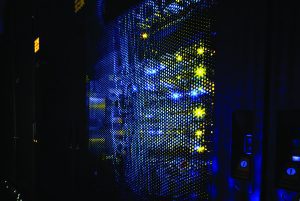Microsoft Chief Technology Officer Kevin Scott is bullish on edge computing technology, particularly the industrial edge. “There’s a whole class of things that we’re able to do with the intelligent edge that were economically infeasible or outright impossible before,” he told The Wall St. Journal.
Scott believes edge computing has the potential to transform industries ranging from agriculture to industrial manufacturing and healthcare with its ability to offer real-time data analysis and insight from billions of devices in the field, WSJ reports. “It’s a really cool new frontier,” he says.
I couldn’t agree more, and a “new frontier” is a good way to put it. Schneider Electric research shows only about 15% of companies have deployed Internet of Things technology to support industrial applications – which are a prime driver behind edge computing.
Another big Microsoft bet
Microsoft is looking to get in on the ground floor. As the WSJ story reports, Microsoft last year announced it is putting a $5 billion bet on Internet of Things technologies – “of which edge computing is a major component.”
That kind of large bet brings to mind a couple of other seminal moments in Microsoft’s history that marked major technology shifts. One is the “Internet Tidal Wave” memo Bill Gates sent to all Microsoft executive staff in 1995, outlining the threats and opportunities he saw in the Internet (many of which turned out to be remarkably accurate).
The other is the memo Gates sent to all Microsoft employees in 2002 that launched the company’s “Trustworthy Computing” initiative. Again, Gates and Microsoft correctly identified the cyber security threat and how an effective response could position Microsoft well for the future. “By delivering on Trustworthy Computing, customers will get dramatically more value out of our advances than they have in the past,” Gates wrote in his conclusion to the memo.
More value from the industrial edge
The industrial edge holds similar promise for delivering more value to customers.
The oil and gas industry is a prime candidate for edge computing. An example cited in the WSJ story mentions a Schneider Electric application used to predict mechanical problems with rod pumps – the iconic pivoting pumps that extract oil in remote locations around the world. The Schneider Realift Rod Pump Control application has long been used to monitor and configure pump settings. When we wanted to upgrade Realift to also predict impending failures, we worked with Microsoft to implement its Azure IoT Edge and Azure Machine Learning, all running out in the field. Now customers have the flexibility to run it wherever they like, in the cloud or at the edge.
Similarly, in manufacturing environments IIoT devices and sensors on the factory floor measure temperature and humidity, plus energy, motor and drive characteristics, vibrations and other variables. All this data drives accurate predictions regarding when machine components will start to fail, giving companies time to take steps to remedy the situation before it causes a shutdown. This improves the Overall Equipment Effectiveness (OEE) metric, which impacts availability, quality and efficiency. (Check out this blog post by Diego Tamburini, Principal Manufacturing Industry Lead for Microsoft’s Azure Industry Experiences Team, to learn more about how edge computing enables smart manufacturing.)
IIoT applications also play a role in quality control, such as through real-time video analytics. Picture a conveyor belt where humans are tasked with sorting nice, shiny supermarket-ready apples from their bruised counterparts that are more suitable for apple sauce or juice. In a fraction of the time, and with far more accuracy, a video- and analytics-driven inspection can sort them according to criteria including shape, weight, finish, color and more – but it requires edge computing to reduce latency.
Agriculture is another example, which Microsoft’s Scott points to the WSJ article. To assess which areas need more or less water or fertilizer, farmers have to manually inspect hundreds or thousands of acres – a nearly impossible task and certainly cost-prohibitive given the amount of manual labor involved. But farmers can use sensors and cameras in the fields to report on everything from moisture levels to pests. The resulting data is fed to machine-learning algorithms running on IT gear located on or near the farm – at the network edge. Farmers get real-time information on the status of their crops, and probably a far more complete picture than they ever could garner manually.
Improved productivity from edge applications
Which brings me to a final benefit of industrial edge computing: improved productivity. Statistics show labor productivity has grown only 1.1 percent annually since late 2007. Across many industries, we’ve essentially reached a productivity ceiling.
As the examples from the agriculture, manufacturing, and oil and gas industries show, industrial edge applications can change that dynamic. Just as Microsoft did with the Internet and cyber security, it’s just a matter of accepting the sea change that IIoT and the industrial edge represent and exploring ways to make it pay for your company.
Schneider Electric stands ready to help in that journey, such as with our Micro Data Centers, which provide an easy way to bring up complete edge data centers at the speed today’s business environment requires.


